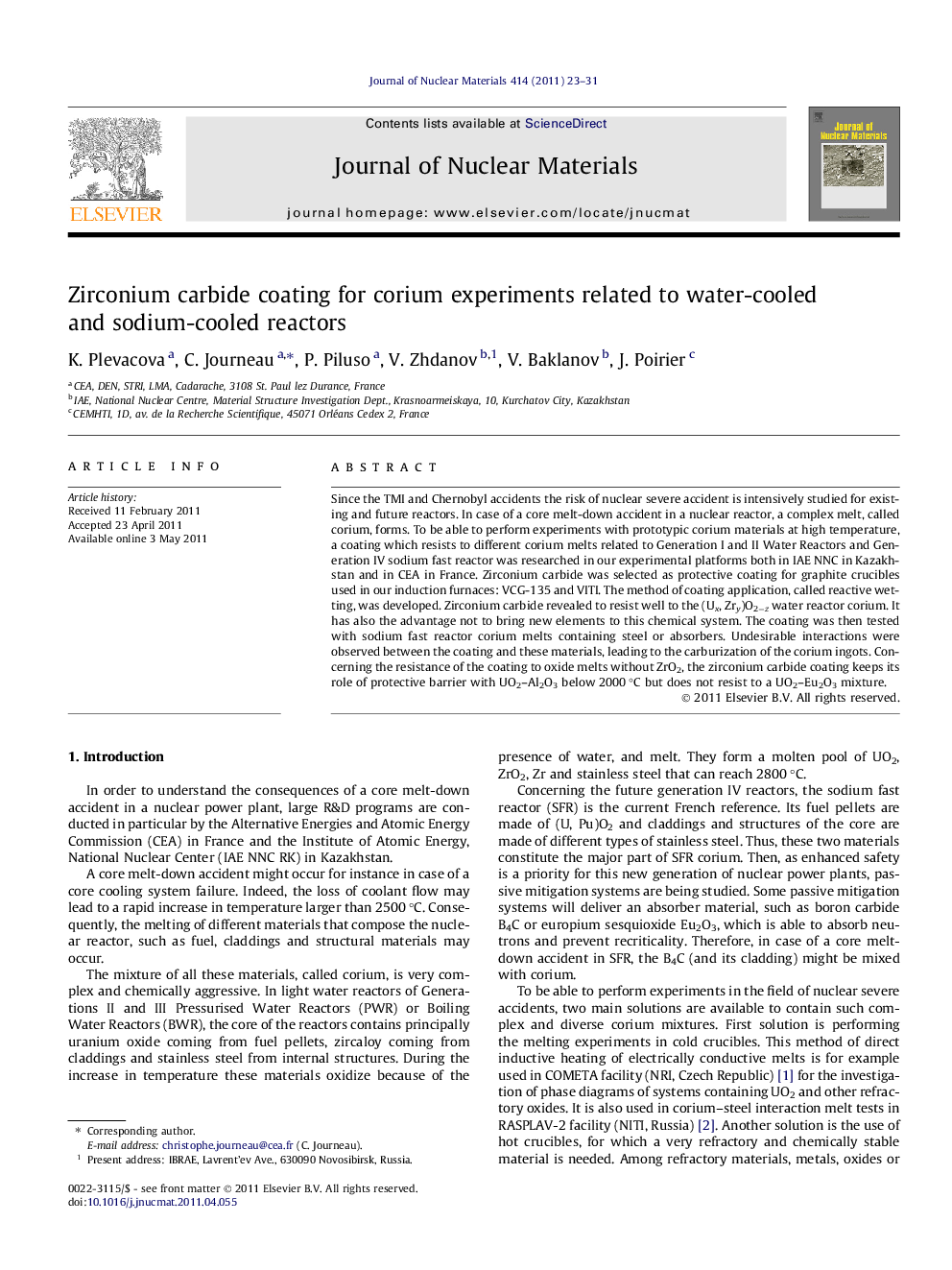| Article ID | Journal | Published Year | Pages | File Type |
|---|---|---|---|---|
| 1566915 | Journal of Nuclear Materials | 2011 | 9 Pages |
Since the TMI and Chernobyl accidents the risk of nuclear severe accident is intensively studied for existing and future reactors. In case of a core melt-down accident in a nuclear reactor, a complex melt, called corium, forms. To be able to perform experiments with prototypic corium materials at high temperature, a coating which resists to different corium melts related to Generation I and II Water Reactors and Generation IV sodium fast reactor was researched in our experimental platforms both in IAE NNC in Kazakhstan and in CEA in France. Zirconium carbide was selected as protective coating for graphite crucibles used in our induction furnaces: VCG-135 and VITI. The method of coating application, called reactive wetting, was developed. Zirconium carbide revealed to resist well to the (Ux, Zry)O2−z water reactor corium. It has also the advantage not to bring new elements to this chemical system. The coating was then tested with sodium fast reactor corium melts containing steel or absorbers. Undesirable interactions were observed between the coating and these materials, leading to the carburization of the corium ingots. Concerning the resistance of the coating to oxide melts without ZrO2, the zirconium carbide coating keeps its role of protective barrier with UO2–Al2O3 below 2000 °C but does not resist to a UO2–Eu2O3 mixture.
